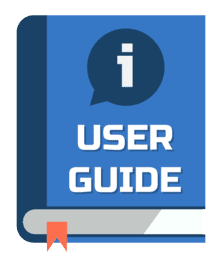MODEL MEDIA SOSIAL DI SEKTOR PUBLIK : STUDI LITERATUR
Abstract
Media sosial telah menjadi bagian dari gaya hidup masyarakat, mulai dari usia anak-anak hingga orang dewasa. Media sosial adalah sumber informasi dalam setiap kegiatan komunitas, mulai dari berita, lowongan pekerjaan, kuliner dan sebagainya. Semua informasi dapat diperoleh dalam satu media, yaitu media sosial. Bagaimana dengan layanan publik? Bisakah pemerintah menggunakan media sosial dalam menyediakan layanan? Media sosial dengan kelebihan dan kekurangannya dapat digunakan untuk meningkatkan layanan kepada masyarakat. Interaksi antara pemerintah dan masyarakat diperlukan untuk mendapatkan informasi yang benar, dapat diandalkan, dan cepat. Pemerintah harus cepat menanggapi setiap pertanyaan, keluhan melalui konten yang mudah digunakan oleh publik. Model media sosial yang digunakan harus mengadopsi semua kebutuhan masyarakat, terutama untuk layanan rutin. Integrasikan semua layanan dari tingkat pusat hingga daerah. Menu terpisah untuk layanan komunitas dan layanan bisnis, semua layanan masih harus diverifikasi untuk menghindari hoaxs atau fitnah.
Keywords
Full Text:
PDFReferences
Fusi, F., & Feeney, M. K. (2018). Social media in the workplace information exchange, productivity, or waste? The American Review of Public Administration, 48(5), 395–412.
G. H. M. Oliveira and E. W. Welch,(2013), “Social media use in local government: Linkage of technology, task, and organizational context,†Gov. Inf. Q., vol. 30, no. 4, pp. 397–405.
I. Mergel, (2013), “A framework for interpreting social media interactions in the public sector,†Gov. Inf. Q., vol. 30, no. 4, pp. 327–334.
J. C. Bertot, , P. T. Jaeger, and J. M. Grimes, (2010), “Using ICTs to create a culture of transparency: E-government and social media as openness and anti-corruption tools for societies,†Gov. Inf. Q., vol. 27, no. 3, pp. 264–271.
Kaplan, A. M. (2012). If you love something, let it go mobile: Mobile marketing and mobile social media 4x4. Business Horizons, 55(2), 129–139. https://doi.org/10. 1016/j.bushor.2011.10.009
Kim, S., & Yoo, S. J. (2016). Age and gender differences in social networking: effects on South Korean students in higher education. Social networking and education (pp. 69– 82). Springer
Lau, W. W. F. (2017). Effects of social media usage and social media multitasking on the academic performance of university students. Computers in Human Behavior, 68, 286–291.
Loukis, E., Charalabidis, Y., & Androutsopoulou, A. (2017). Promoting Open Innovation in the Public Sector through Social Media monitoring. Government Information Quarterly, 34(1), 99–109.
Manetti, G., Bellucci, M., & Bagnoli, L. (2017). Stakeholder engagement and public information through Social media a Study of Canadian and American public transportation agencies. The American Review of Public Administration, 47(8), 991–1009.
M.A. Demircioglu, C.-A. Chen (2019),Government Information Quarterly 3, 51–60 59 in the Australian Public Service: Testing Self-Determination Theory. Public Performance & Management Review, 41(2), 300–327.
M. R. Vicente and A. Novo,(2014), “An empirical analysis of e-participation. The role of social networks and e-government over citizens’ online engagement,†Gov. Inf. Q., vol. 31, no. 3, pp. 379–387.
Ma, Meng dan Agarwal, Ritu (2007). Through a Glass Darkly: Information Technology Design, Identity Verification, and Knowledge Contribution in Online Communities. Information System Research.
Mergel, I. (2017). Building Holistic evidence for Social Media Impact. Public Administration Review, 77(4), 489–495. https://doi.org/10.1111/puar.12780.
M. Vos and E. Westerhoudt, (2008),“Trends in government communication in The Netherla-nds,†J. Commun. Manag., vol. 12, no. 1, pp. 18–29
Norman, Donald A.(2014), Introduction to this special section on beauty, goodness, and usability. Human- Computer Interaction 19.4 , 311-318.
Shami, Sadat N., Jilin Chen, Nichols, Jeffry.(2014), Social Media Participation and Performance at Work: A Longitudinal Study. ACM 978-1-4503-2473-1/14/04.
Siddiqui, S., & Singh, T. (2016). Social media its impact with positive and negative aspects. International Journal of Computer Applications Technology and Research, 5(2), 71-75. http://www.ijcat.com/archives/ volume5/issue2/ijcatr05021006.pdf
Sharif, M. H. M., Troshani, I., & Davidson, R. (2015). Public sector adoption of social media. The Journal of Computer Information Systems, 55(4), 53–61.
S. Picazo-Vela, I. Gutiérrez-MartÃnez, and L. F. Luna-Reyes, (2012) “Understanding risks, benefits, and strategic alternatives of social media applications in the public sector,†Gov. Inf. Q., vol. 29, no. 4, pp. 504–511, 2012
Buku
Demircioglu, M. A. (2018). Examining the Effects of Social Media Use on Job satisfaction
Hrdinová, Jana., Helbig, Natalie., Peters, Catherine Stollar. 2010. Designing Social Media Policy For Government: Eight Essential Elements. Laporan, New York: The Research Foundation Of State University Of New York
Treem, Jeffry W. dan Leonardi, Paul M.(2012) Social Media Use in Organizations: Exploring the Affordances of Visibility, Editability, Persistence, and Association. Social Science Research Network.
Tuten, T. L., & Solomon, M. R. (2014). Social media marketing. Sage.
Internet
Cawidu, I. (2016, 12 Oktober). Pemanfaatan media sosial. Materi presentasi disampaikan dalam acara Rapat Kerja Pustakawan XX Ikatan Pustakawan Indonesia. Bandung, Indonesia.
uploads/2016/10/Pemanfaatan-Media-Sosial- Ismail-Cawidu.pdf>
The State of Queensland (Department of Public Works) 2010, Online community engagement guideline
Queensland Government (2010). Official use of social media guideline. Australia: Department of Public Works ICT Policy and Coordination Office December.
Refbacks
- There are currently no refbacks.
@2017-2024
Jl. Hayam Wuruk No. 34-38 Bandung
Politeknik STIA LAN Bandung
Powered by OJS (Open Jounal Systems)


